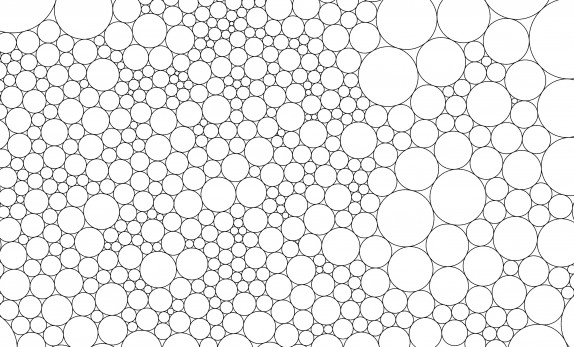
Wengerodt, Die dichteste Packung von 25 Kreisen in einem Quadrat, Ann. Wengerodt, Die dichteste Packung von 14 Kreisen in einem Quadrat, Beiträge Algebra Geom. Wengerodt, Die dichteste Packung von 16 Kreisen in einem Quadrat, Beiträge Algebra Geom. GÁspÁr, Covering a square by equal circles, El. Schwartz, Separating points in a square, J. Kirchner, Eine Verteilung von 13 Punkten auf einem Quadrat, Wiss. Meir, On a geometric extremum problem, Canad.

tency of packing efficiency can be visualized with a 5.8圆 Rectangle using unit circles as. Schaer, The densest packing of 9 circles in a square, Canad. which the circle packing problem was developed and solved. In your case, with an hexagonal packing of circles of diameters 1, 12 cicles can be cut in. Pirl, Der Mindestabstand von n in der Einheitskreisscheibe gelegenen Punkten, Math. Start with a dense packing of the circles. Peikert, Dichteste Packungen von gleichen Kreisen in einem Quadrat, El. ÖstergÅrd, More optimal packings of equal circles in a square, in preparation. ÖstergÅrd, Optimal packings of equal circles in a square, submitted Proceedings 8th Quadrennial International Conference on Graph Theory, Combinatorics, Algorithms and Applications (1996). Schuur, Improved coverings of a square with six and eight equal circles, Electronic J. Meljssen, Thinnest covering of an equilateral triangle with ten circles, 3 pp. Melissen, Loosest circle coverings of an equilateral triangle, Math. Melissen, Optimal packings of eleven equal circles in an equilateral triangle, Acta Math. Melissen, Densest packing of six equal circles in a square, El. Melissen, Densest packings of eleven congruent circles in a circle, Geom. Melissen, Densest packings of congruent circles in an equilateral triangle, Amer. KrotoszyŃski, Covering a disk with smaller disks, Stud. Wengerodt, Die dichteste Packung von 36 Kreisen in einem Quadrat, Beiträgc Algebra Geom. (Also, if the rectangle is only 2 m r units tall, we can alternate columns with m and m 1 circles. algorithms for packing unequal circles into a rectangular container, Journal of the Operational. Fejes TÓth, Thinnest covering of a circle by eight or nine congruent circles. So if you want the triangular packing to have m circles in each column, and n columns, then the rectangle must be at least ( 2 m + 1) r units tall and ( 2 + ( n 1) 3) r units long. Two-dimensional rectangle packing problem is the problem. Bezdek, Über einige optimale Konfigurationen von Kreisen, Ann. Bezdek, Körök optimális fedései (Optimal covering of circles), Dissertation, Budapest (1979). I have added a simple dichotomic search on top of it to guess the minimal surface (which yields the smallest bounding rectangle for a given aspect ratio).K. (it simply tries to fit a bunch of circles into a given rectangle). The original algorithm does not produce the smallest rectangle to hold all the circles The algorithm simply starts with the four bounding circles and adds one circle at a time, using the greedy heuristic lambda parameter to pick the "best" location. This also simplifies the start condition greatly. The "corner" circles (as the algorithm calls them) are all computed as tangents to a pair of circles, thus eliminating the special circle+segment or segment+segment cases. They are computed to pass through the corners of the bounding box and converge toward the actual sides when the radius grows. A hybrid genetic algorithm is combined with a heuristic method to pack different-sized circles into a rectangular area. The picture shows what the 4 bounding circles look like when the radius is decreased. Instead of segments defining the bounding box, I used circles with "infinite" radii, that can be considered a good approximation of lines: I used a trick to make the computation more regular. (By a packing here we mean an arrangement of disks. I tweaked it quite a bit, but I think it does basically the same thing. The problem of packing of equal disks (or circles) into a rectangle is a fundamental geometric problem. Here is a go at the implementation of your algorithm. This is the general pattern: function drawCircles() )

There's a much better way to do this - using Mitchell's Best Fit algorithm.


 0 kommentar(er)
0 kommentar(er)
